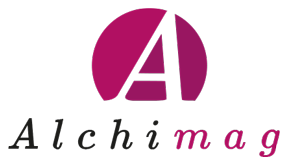“Landscape is architecture. So at One Central Park, we have created a kind of continuity between the park and…

Italian architects Onsitestudio have completed the Milan headquarters of an electrical product manufacturer, wrapped in profiled steel. The main purpose of the project is the overall reorganisation of an area used for the production of electrical converters, located in an industrial compound along the Cassanese state highway, east of Milan. The main idea is to define the boundaries of the production site by building a continuous wall to create a feeling of an enclosed urban block. The building “thickens” this wall near the angle, separating the internal space from the external one, with an internal garden and public spaces along the street .
 The project foresees research spaces on the ground floor, withdrawn and facing the internal garden and offices on the second floor. The volume folds around the angle and stretches out with two bodies, characterized by a continuous glass façade: the first body, facing the birch garden, is designed to be used for directors’ offices, while the second one, facing the street, will be used for the operating offices. On the far west side, in direction of the state road, the volume becomes a vertical body, with the tower hosting the technical stations. The metal skin, constituted by shaped and drilled sheet metal in opaque stainless steel, envelopes the building entirely like a curtain, thus conferring to the volume a balanced character, where the opaque and transparent portions are ambiguously defined. The skin filters the light into the building at different opening degrees, depending on the exposure to the sun and the degree of intimacy desired in the interior.
The project foresees research spaces on the ground floor, withdrawn and facing the internal garden and offices on the second floor. The volume folds around the angle and stretches out with two bodies, characterized by a continuous glass façade: the first body, facing the birch garden, is designed to be used for directors’ offices, while the second one, facing the street, will be used for the operating offices. On the far west side, in direction of the state road, the volume becomes a vertical body, with the tower hosting the technical stations. The metal skin, constituted by shaped and drilled sheet metal in opaque stainless steel, envelopes the building entirely like a curtain, thus conferring to the volume a balanced character, where the opaque and transparent portions are ambiguously defined. The skin filters the light into the building at different opening degrees, depending on the exposure to the sun and the degree of intimacy desired in the interior.
 The facades are completely defined by a metallic skin composed of opaque stainless steel shaped, perforated and stretched sheeting. The steel selected for this project is stainless AISI 304, with a 2 mm thickness and 4 to 4.5 m high sheets. The texture of the metallic elements has been developed in several phases trying to use common industrial elements, such as folded and perforated sheets, to then achieve a bespoke solution to follow the concept of a cladding whose variety can be shown at different levels, both in plan and elevation. In correspondence of the glazed elements the metallic cladding continues and maintains its shape, but it is perforated. The presence of many small oval holes allows the metallic skin to filter the light with various grades of opening in relation to the sun exposure and the level of intimacy of the internal spaces.
The facades are completely defined by a metallic skin composed of opaque stainless steel shaped, perforated and stretched sheeting. The steel selected for this project is stainless AISI 304, with a 2 mm thickness and 4 to 4.5 m high sheets. The texture of the metallic elements has been developed in several phases trying to use common industrial elements, such as folded and perforated sheets, to then achieve a bespoke solution to follow the concept of a cladding whose variety can be shown at different levels, both in plan and elevation. In correspondence of the glazed elements the metallic cladding continues and maintains its shape, but it is perforated. The presence of many small oval holes allows the metallic skin to filter the light with various grades of opening in relation to the sun exposure and the level of intimacy of the internal spaces.
 Only the entrance which is characterised by zenithal light. The sensation for those who are inside is of an intimate and reserved environment with relaxing views over the green of the internal garden. The choice of the metallic cladding, as well as for the rest of the construction executed with the assembly of prefabricated elements (iron profiles for the structures and plasterboard panels for the partitions), has been dictated by the desire of slimming down and simplify the construction phase, while speeding up the phases, reducing the storage space for materials on site and improving the quality of the finished product.
Only the entrance which is characterised by zenithal light. The sensation for those who are inside is of an intimate and reserved environment with relaxing views over the green of the internal garden. The choice of the metallic cladding, as well as for the rest of the construction executed with the assembly of prefabricated elements (iron profiles for the structures and plasterboard panels for the partitions), has been dictated by the desire of slimming down and simplify the construction phase, while speeding up the phases, reducing the storage space for materials on site and improving the quality of the finished product.
 The building is designed to meet the class A energy efficiency requirements of CENED.
The building is designed to meet the class A energy efficiency requirements of CENED.
The metal covering has been designed to be covered with photovoltaic panels in amorphous silica. Energy efficiency is achieved through several strategies: a high performance covering system for both opaque and transparent portions, external shielding systems against solar radiation, internal curtains, technical systems based on heat pumps, he recovery of rain water for irrigation and high performance double glazing. Stratigraphy is organised as follows: a sandwich panel in wood and mineral wool with a thickness of 150 mm, coupled on the outside with a transpiring, watertight and UV resistant membrane, and completed on the inside by an insulated wall lining in plaster with 3 plates.
Credits:
Onsitestudio Architects
Friem Headquarters, Segrate (Milan, Italy)
Building Surface: 2100 mq
Opening: 2010
Materials: Steel, Wood and Mineral Wool
Applications: Envelope Cladding, Solar Shading, Sandwich Panel
Figures: © Filippo Romano; © Onsitestudio; © Helene Binet





